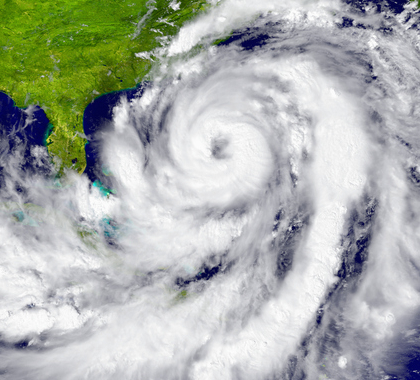As Hurricane Irma barreled down on Florida, Environmental Protection Agency (EPA) Director Scott Pruitt issued a potentially life-saving regulatory waiver. How the EPA affects hurricane evacuation illustrates the extensive and often unintended effects of government regulation. Furthermore, these waivers illustrate how control of the White House matters for our lives.
The EPA fuel blending requirements for gasoline were affecting hurricane evacuation. The gasoline sold in different cities, or at different times of the year in a city, is not the same. The formula for gas or diesel fuel contributes to air pollution, and so the EPA adjusts formulas accordingly.
The most prominent adjustment involves gasoline during the summer. Volatile organic compounds in gas contribute to ground level ozone, or smog, which is typically worse in the summer. Consequently, EPA reduces gasoline vapor pressure for the summer, adjusting the requirements by month and city. Other standards also apply to gas and diesel, but the boring details are irrelevant here.
Tailoring the standards makes sense. Alabama faces the least strict summer gas standard (stricter standards applied in Birmingham until 2015). Making Alabama meet the strict standards needed in cities with bad summer smog would provide very modest environmental benefits. It would be like imposing Florida’s hurricane building codes in North Dakota. Forcing one standard on the entire country either incurs unnecessary costs in places where pollution is not a big problem, or fails to provide enough protection in places facing bad pollution problems.
Tailored standards, however, cause gas to be produced exclusively for one region, effectively dividing the nation into multiple gas markets. If producers fail to correctly anticipate the amount of gas drivers want to buy in each region, localized shortages will result. We will not be able to simply bring in extra gas from surrounding areas, and have too much gas produced for some markets.
Economics is about tradeoffs, and this is a classic tradeoff. The more precisely we tailor gas standards, the greater the likelihood of local shortages and surpluses. Shortages will be worse when a significant increase in demand occurs, as with Floridians evacuating in advance of Irma.
The EPA though can authorize waivers of the rules. Secretary Pruitt’s waiver helped ensure sufficient gas supplies for Irma evacuees. Hurricane Harvey’s disruption of production and refining in Texas and Louisiana prompted several waivers as well. Waivers can also be issued when fires or accidents shut down oil refineries unexpectedly.
But waivers also worsen air pollution, leading temporarily to negative health impacts, and so are costly. EPA policy states that high prices alone do not justify a waiver.
Just when should the EPA grant a waiver? Some cases seem obvious, like ensuring sufficient supplies of diesel fuel for emergency vehicles after Hurricane Sandy. In many cases, however, reasonable people will disagree. And this is how the occupant of the White House, who selects the head of the EPA, affects regulation and consequently our lives. The frequency of fuel waivers has varied significantly under the past three presidents. The Trump administration has granted nine waivers so far in 2017, compared with thirteen during President Obama’s eight years in office (with several tied to Hurricane Sandy), and forty-nine during George W. Bush’s second term in office. A Republican EPA Secretary seems more likely to find a waiver to be justified.
Another illustration of the importance of political appointees was provided by Education Secretary Betsy DeVos’ recent rescinding of an Obama Administration rule concerning due process in the investigation of sexual assault cases by universities. A new interpretation of Title IX announced under President Obama in 2011 has proven very controversial. Administrators like Secretary DeVoss have considerable discretion, particularly in interpreting existing regulations.
We hear much about gridlock in Washington today, but gridlock mostly involves Congress and the legislative process. Yet today most Federal action is via regulation; in 2016, eighteen regulations were issued for every law passed. And so on the regulatory front, President Trump is making a mark, as each administration inevitably does.





